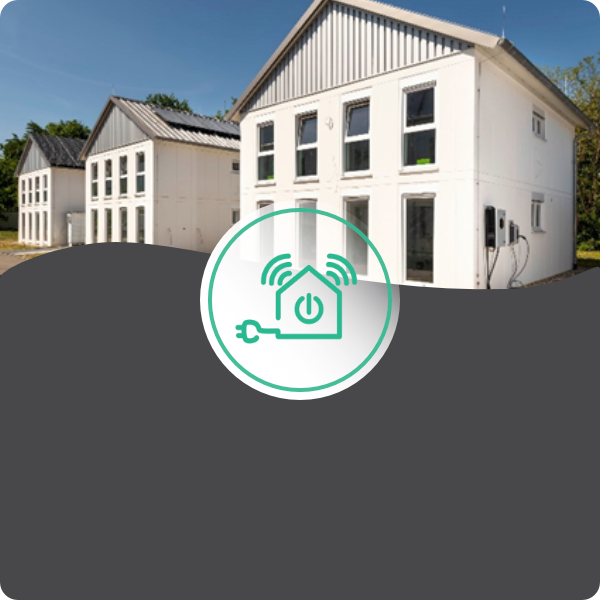What would the energy transition be without consumers? In this laboratory, living and working conditions are compared and evaluated. The data provides valuable insights and enables realistic research.
In the Helmholtz Research Infrastructure (FIS) Living Lab Energy Campus, three experimental buildings were constructed with identical building shells and extensive instrumentation, but with different controllable heating systems. The three experimental buildings enable research into self-adjusting process control for grid-friendly control of building heating systems and their validation in a real-part experiment. Thanks to improved process control, all heating systems equipped with such modern controllers save energy directly. Electricity-based heating systems with grid-supporting controls also provide system services in the electricity grid.
Research topics and objectives
- Real testing of any operating scenarios thanks to the high flexibility of the experimental buildings
- Self-adjusting process control for grid-compatible control of building heating systems and validation in real-part experiments
- Operation of a complete DC house
Equipment
Heat pump house
- Air-to-water heat pump
- Brine-to-water heat pump
- Exhaust air module for brine-to-water heat pump
- Connection to the district heating network
- Thermal stratified storage tank
- Photovoltaic system
- Battery storage (AC, three-phase, 15 kWh)
- Charging stations (also V2G)
- Battery electric vehicles
Power house
- Electric auxiliary heating
- Electric underfloor heating for component activation
- Thermal solar system
- Connection to the district heating network
- Thermal stratified storage tank
Gas2Heat house
- Gas condensing boiler
- Natural gas fuel cell
- Residential ventilation with heat recovery
- Connection to the district heating network
- Thermal stratified storage tank
- Photovoltaic system
- Battery storage (DC, single-phase, 5.2 kWh)
- Charging stations (also V2G)
- Kitchen with DC appliances
Weather measuring station
- Solar radiation
- Outdoor temperature
- Wind speed
- Air pressure
- Wind direction
- Air humidity
- Degree of cloud cover
- amount of precipitation
- Brightness
Measurement sensors
- Thermal measurements (room air, walls, ceilings, screed, near-surface geothermal energy, stratified storage tanks, heat and cold generators, outdoor temperature, u-value, room humidity,CO2, heat meter for heating circuit, ...)
- Electrical measurements (current, voltage, frequency, ...)
- Hydraulic measurements (volume flows via heating circuit, mass flows via heating circuit, differential pressures via heating circuit)





